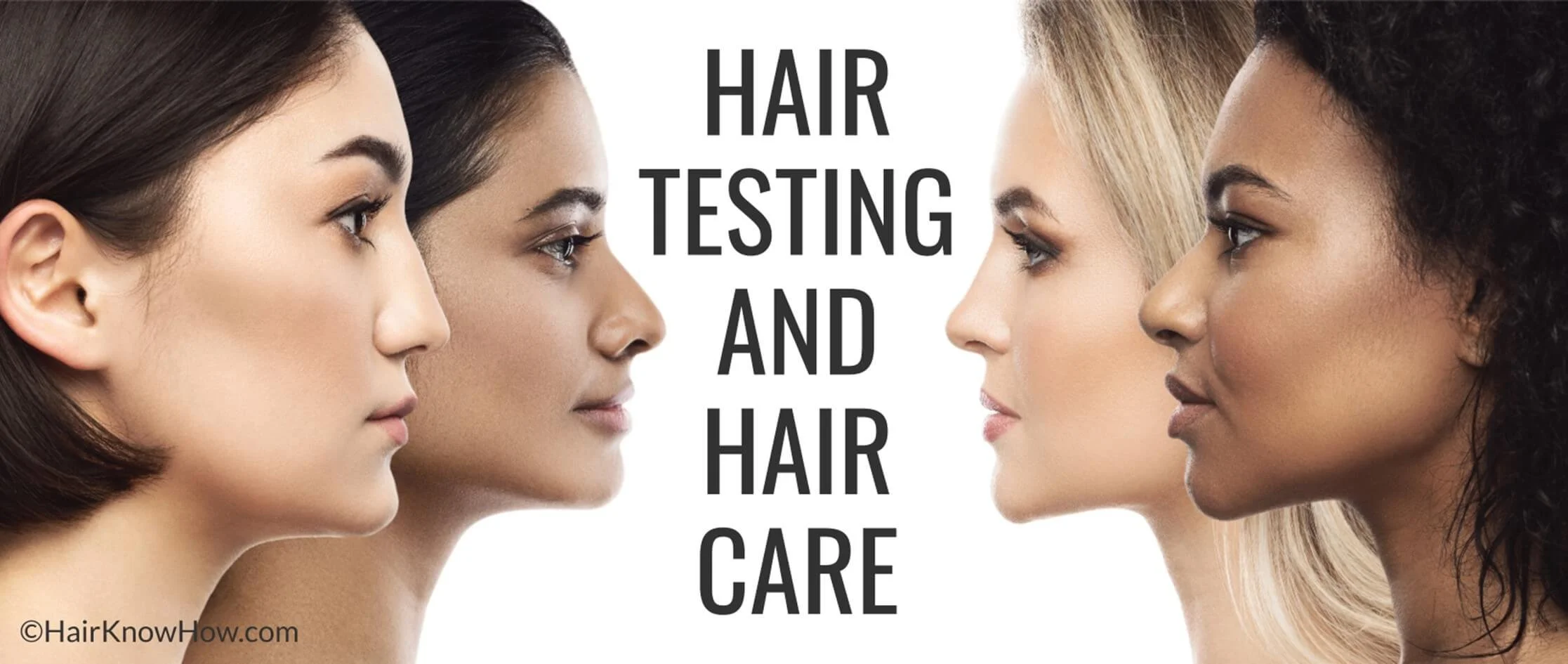To Hair Test Interpretation and Analysis Summary
Hair testing is often a complex laboratory procedure. Depending on the hair test service offered, the complexity varies considerably.
Many types of hair tests exist, all of which deliver very different results depending on the kind of analysis and reporting offered by the hair testing company.
Some hair tests test and evaluate your hair health focusing on hair health testing, which investigates the leading health markers of hair, including porosity and cuticle health.
It has become increasingly popular in recent years, with some hair tests providing insight into long-term exposure to toxins that may be present in the environment or certain foods and beverages.
Other types of hair tests detect the presence of specific contaminants in hair or even recreational such as alcohol or prescription drugs.
However, interpreting the results of these hair tests can be complex, as the data can be complicated, requiring a hair expert to break down the results for the client.
This blog post will discuss how to interpret and analyse hair test results. We will also explore what factors need to be considered when evaluating the results of a hair test, as well as how to determine if further testing
Often hair test results will be accompanied by a detailed report or explanation pamphlet that summarises the key takeaway messages within the hair report. The resulting Hair reports and subsequent analysis should be a stand-alone document that is easily understandable. If you have questions or need clarification, you should direct them toward the hair test service provider.
Hair Drug Test Result Interpretation
Hair testing is a standard drug testing method, but it can be tricky to interpret the results.
A positive hair test for drugs does not necessarily mean that the person is currently using drugs, as drug metabolites can remain in the hair for up to a year (depending on hair sample length). However, it can give employers and other drug testing agencies an idea of an individual's recent drug use.
It's all about context, interpretation and understanding the pitfalls within any hair test.
There are several different ways to interpret and analyse hair drug test results:
The most common method is to look at the concentration of drug metabolites in the sample. This can be expressed as a ratio of the parent compound to a metabolite or as a percentage of total hair content. The cut-off values for positive results vary depending on the agency conducting the test but are usually around 0.1%, but this can vary. It is often best to consult the specific hair test service supplier for clarification.
Another way to interpret hair test results is to examine the pattern of drug use over time. This can be done by looking at how many hairs are positive for each drug and how far down the shaft they are. This can give testers an idea of whether someone has been using drugs regularly or sporadically and how long ago they last used drugs.
Both methods have strengths and weaknesses, so it is essential to consult a qualified professional before making decisions based on hair test results.
Understanding Hair Test Results
There are many types of hair tests available. All measure different chemical, physical or mechanical properties of hair. Hair tests may measure one variable or many hair parameters, from drug use to mineral levels and hair health parameters.
When you receive your hair test results, it's important to take the time to understand them. Here is a guide to help you understand your hair test results.
Hair Health Tests: A hair test of this type will contain data from several tests and possibly from multiple samples depending on the hair goals and outcomes desired. These hair tests should be individually explained within the report or on the hair test provider's website. HairKnowHow offers such tests and provides this information within the hair report and on the HairKnowHow.com website.
Hair Drugs Tests: A hair test can detect drugs that have been used in the past 90 days, but this can extend to one year, depending on the length of the hair sample. The detection window for each drug is different and depends on how much hair is tested, the half-life of the drug within the hair sample and the test's sensitivity. Drug half-life will vary depending on hair type, hair care treatment and what the drug is.
Hair Mineral Tests: A hair test can also measure mineral levels, including iron, zinc, and copper. This information can help diagnose nutritional deficiencies or underlying health conditions that you can use to help you become healthier and feel better in yourself.
The service supplier should either provide you with details of the recommended concentration of the mineral alongside your result, including an explanation or use a simple system such as a traffic light system (green, yellow, red) to help you understand the report.
Hair Hormone Tests: A hair test can also measure hormone levels, such as testosterone and estrogen. This information can help diagnose hormonal imbalances or underlying health conditions. You will need to know what "normal" hormone levels are concerning the hair test results. This information should be included in your hair test report or on the hair test provider's website, along with any conclusions that can be drawn from the result. Some providers use a traffic light or similar system to help clients understand their results in the content of what is expected in the “normal” range of the test result.
Hair Test Analysis Methods
Hair Health Test Method:
Hair health tests use many methods to investigate the different properties of hair that are needed to form a comprehensive overview of the health of a hair sample. Some standard techniques to analyse a hair sample includes (Transmission Electron Microscopy) TEM, Scanning Electron Microscopy (SEM) Spectroscopy, UV-VIS, and various biochemical tests.
Understanding how these methods work involves some complex and in-depth physics or biochemistry knowledge. What is essential to understand is how these techniques are applied to hair testing, the limitations of the test and what the results mean for you.
Hair Drug Testing Method:
Hair follicle testing can be used to screen for recent drug use as well as long-term exposure. The most common drugs tested for include: marijuana, cocaine, amphetamines, alcohol and opiates. Many factors can affect the results of a hair test, including the type of drug, the frequency of use, the individual's metabolism, and even the environment in which the hair was growing.
There are two main methods of analysis for hair tests: immunoassay and gas chromatography/mass spectrometry (GC/MS). Immunoassay is the less expensive and faster of the two methods, but it is also less accurate. GC/MS is more costly and takes longer to get results, but it is considered much more reliable.
If you face a hair follicle test, it is crucial to understand how these tests work and your options. A knowledgeable scientist specialising in drug testing and a lawyer can help you interpret your results and build a strong defence against any potential charges.
Hair Test Results and Expert Analysis
Hair testing is a valuable tool for measuring different physicochemical properties of hair, including the chemical or pharmaceuticals present.
In an ideal world, the results from hair tests should be interpreted and simplified for ease of understanding by the recipient. But this is only sometimes the case, and hair test service providers cannot expect clients to be experts in everything.
A little knowledge regarding hair test results that can impact a client's well-being is necessary and should be included in hair testing reports.
The hair test provider should be available for consultation to deal with any questions.
Hair tests can detect drugs used in the past 90 days or more, making them helpful in determining drug use patterns and identifying recent drug use. Hair test results are reported as nanograms per milligram (ng/mg) of hair.
There is no definitive interpretation of hair test results, but experts can offer some general guidelines. A positive hair test result may indicate that a person has used the drug within the past 90 days. However, it is important to note that hair tests cannot necessarily determine how much or how often a person has used a drug. Additionally, false positives can occur with hair testing, so additional confirmatory testing is typically required.
Some experts believe a positive hair test result should be interpreted based on the individual's history of drug use. For example, a first-time offender with a low level of exposure may be interpreted differently than a chronic user with high levels of exposure. Similarly, someone who uses drugs infrequently may have different results than someone who uses drugs regularly. Both would, however, be positive for the drug.
It is also important to consider the cut-off levels used by the laboratory when interpreting hair test results. Different laboratories use different cut-off levels, which can impact the interpretation of results. For instance, a laboratory may report a positive result if the exposure level is larger than 0.1 ng/mg. In comparison, another laboratory may use a cut-off level of 1 ng/mg.
As such, it is important to understand the cut-off levels used by the laboratory to make an accurate interpretation of any hair test results.
Hair Test Analysis for Legal Cases
When it comes to hair test interpretation and analysis for legal cases, there are a few key things to keep in mind.
First, it's important to remember that hair tests can be susceptible to false positives. This means that a positive result on a hair test does not necessarily mean that the person tested was using drugs. Many factors can contribute to false positives, including environmental contamination and secondary exposure. Taking additional hair samples for testing, using a different and complementary hair test ideally, dramatically increases confidence in any conclusions.
Second, it's important to understand the advantages and disadvantages of hair testing. Hair tests can detect drug use over a longer time than urine or blood tests, but they cannot say definitively when it occurred. This is because drugs tend to be deposited in the hair shafts at different rates depending on the individual.
Finally, interpreting hair test results requires expert knowledge and experience. The interpretation of hair test results is not an exact science, and even experienced professionals may have differing views on the meaning of a particular result. If you need more clarification about the significance of your hair test results, it's best to consult an experienced professional before making any decisions about your case.
Hair Drug Test Interpretation for Workplaces
A hair test interpretation for workplaces can be a tricky thing. The most important part of interpreting a hair test is to remember that the sample should be taken from the root of the hair and not just the shaft. This is because the root of the hair contains information about what drugs have been taken over the past week or so. The shaft only collects chemical information that has been going on in your body over the past few months and may not be relevant to current drug-taking habits.
There are a few different ways to interpret a hair test. The first way is to look at the results from each strand of hair. This can give you an idea of how much of a particular substance is or was in the body. However, it's important to remember that each strand of hair is different and can contain different amounts of substances, which can also be important to understand and interpret.
Another way to interpret a hair test is to look at the results from all strands together to form an average view across your hair. This can give you an idea of whether or not there is a trend present in your results. For example, if you see that all strands of hair contain high levels of a particular substance, you will likely have been exposed to that substance recently. On the other hand, if you see that all of the strands of hair contain low levels of a particular substance, then it's likely that you haven't been exposed to that substance recently.
Interpreting a hair test can be tricky, but it's important to remember that the results can only tell you so much. It is still possible for someone to have an unusually high or low level of a particular substance in their system, even if their overall results appear normal. As such, it's important to consider the results from a collection of hair strands and, ideally, some additional test methods if possible.
Conclusion
Hair testing can help interpret and analyse the body's health. Hair testing is a non-invasive method that provides information about biological trace elements in hair follicles, allowing practitioners to identify potential deficiencies or excesses of key nutrients, hormones and hair health, but also detect recreational drugs.
By understanding the hair test results, practitioners can better guide their patients towards a more personalised healthcare plan tailored to each individual's needs.
With this knowledge at hand, we have the power to optimise our well-being from within.
Get Expert Hair Analysis and Help
If you are interested in learning about hair testing or have a hair concern you would like to discuss, then please do get in touch. Contact the HairKnowHow Team if you have any questions.







